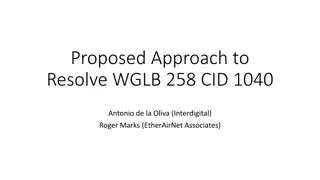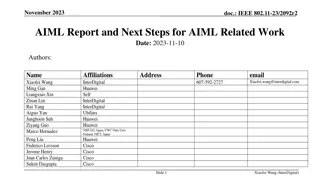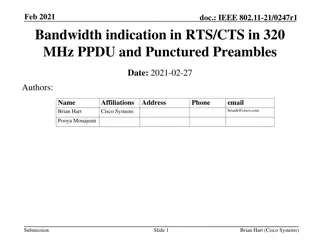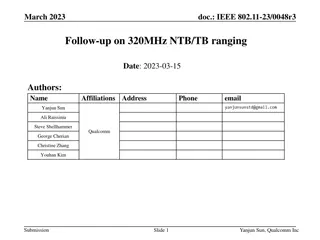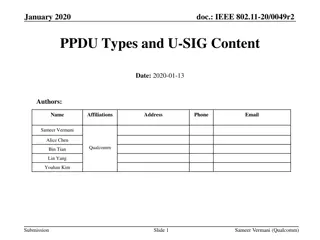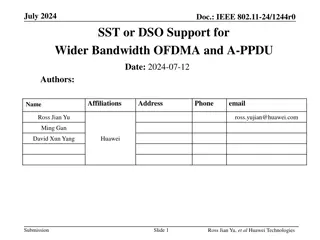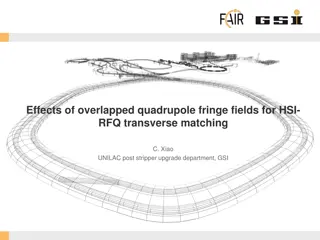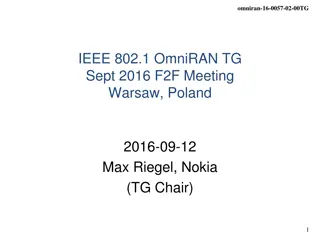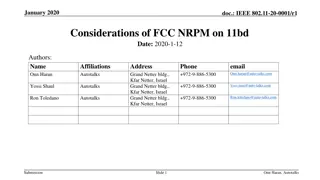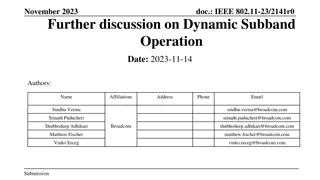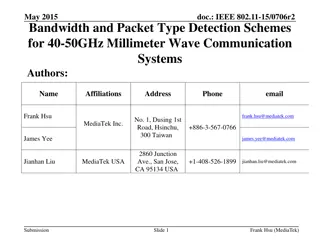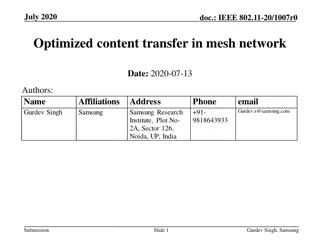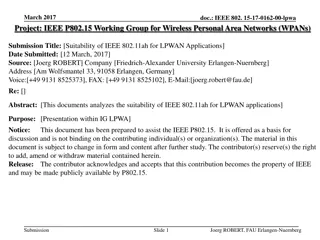Cognitive Passive Estimation of Available Bandwidth in Overlapped IEEE 802.11 WiFi WLANs
Efficient bandwidth estimation is crucial for network management and QoS applications, with cognitive passive methods offering insights without additional traffic loads. This research explores the impact of control messaging overhead, network topology, channel usage, hidden/exposed terminals, and packet size on available bandwidth estimation in IEEE 802.11 WLANs. Evaluation involves using PCs with Atheros 5212 chipset-based NICs running on Linux with MadWiFi WLAN driver, assessing approaches like AAC, ABE, and IAB.
Download Presentation

Please find below an Image/Link to download the presentation.
The content on the website is provided AS IS for your information and personal use only. It may not be sold, licensed, or shared on other websites without obtaining consent from the author.If you encounter any issues during the download, it is possible that the publisher has removed the file from their server.
You are allowed to download the files provided on this website for personal or commercial use, subject to the condition that they are used lawfully. All files are the property of their respective owners.
The content on the website is provided AS IS for your information and personal use only. It may not be sold, licensed, or shared on other websites without obtaining consent from the author.
E N D
Presentation Transcript
Cognitive Passive Estimation of Available Bandwidth (cPEAB) in Overlapped IEEE 802.11 WiFi WLANs Shahnaza Tursunova, Khamidulla Inoyatov and Young-Tak Kim Dept. of Information and Communication Engineering, Graduate School, Yeungnam University Gyeongsan, Korea Email: {sh tursunova, kinoyatov}@ynu.ac.kr, ytkim@yu.ac.kr Network Operations and Management Symposium (NOMS), 2010 IEEE
Introduction Available bandwidth estimation efficient network resource management QoS-guaranteed applications active probing -> extra traffic load passive measurements -> not considering the overhead of control messages mathematical model -> highly dependent on the network topology cognitive passive estimation of the available bandwidth the proportion of waiting and backoff delay packet collision probability Acknowledgement delay channel idle time compared to measurement period
Cognitive Passive Estimation of Available Bandwidth Channel usage ration considering possible overhead by control messaging which may occur in future impacts from hidden/exposed terminals observed channel information considering different packet size
Possible Overhead by Control Messaging the proportion of bandwidth consumed by the DIFS and backoff mechanism Channel idle time Maximum capacity Measurement period Maximum number of retransmissions
Impact of Hidden/Exposed Nodes and Packet Size data frame transmission depends on the frame size frame size has direct impact to the packet collision rate consider the impact from hidden/exposed terminal Total data flow of the hidden nodes Total data flow of the exposed nodes data flow information is provided through IEEE 802.21 Media Independent Handover (MIH) [15] and IEEE P1900.4 [16] architecture
Evaluation of Bandwidth Estimation Approaches use PCs equipped with IEEE 802.11 a/b/g Atheros 5212 chipset based wireless NICs which run on Linux OS with the open source MadWiFi WLAN driver [18] AAC [6], ABE [7], and IAB [8] RTS/CTS message exchanging is disabled channel idle time, current transmission rate, and ACK timeout values are obtained by reading the specific information registers of Atheros HAL
Transmission Counter Register the amount of time spent for the frame transmission while the load is increasing, the node spends more portion of the given time for the transmission
Effect of Different Measurement Period on the Correctness of the Bandwidth Estimation the value of T directly affects the correctness of the estimated available bandwidth send 5 Mbps UDP traffic from one node, while estimating the available bandwidth by the second node
Conclusion proposed a new cognitive passive estimation of available bandwidth (cPEAB) Passive measurement open source MadWiFi WLAN driver Compare with AAC, ABE, IAB, and Wbest provide more accurate estimation in overlapped IEEE 802.11 WiFi WLANs
Progress Current Build ga client and server for screencasting GA Server Access point GA Client Trying mark DSCP field for the video packets at server Next Compare bandwidth estimation in GA to others Implement rate adaptation



